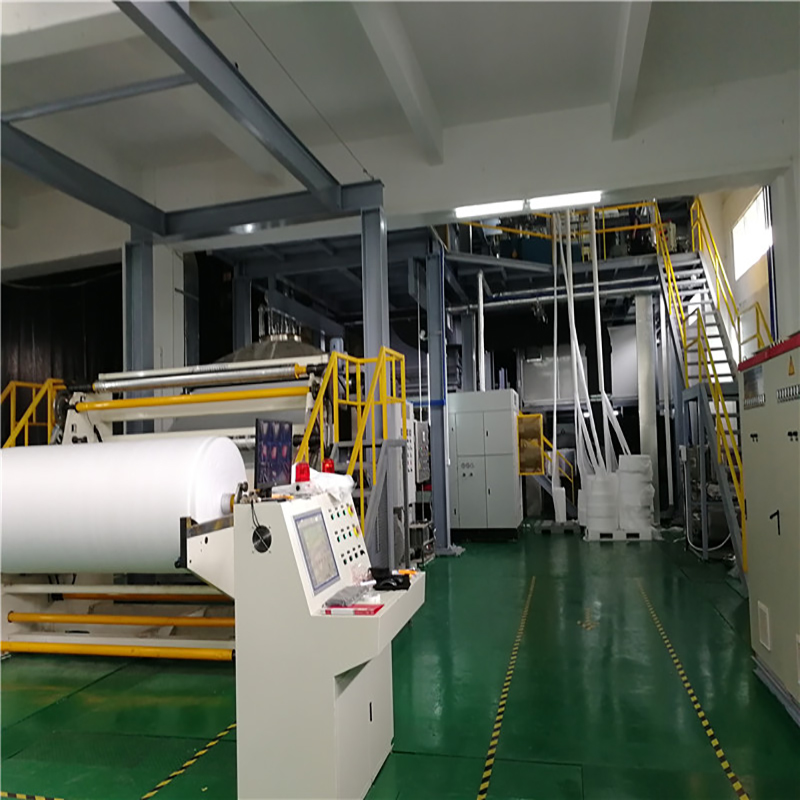After material is produced by a nonwoven fabric line, it typically undergoes several downstream processes to prepare it for its intended application.
These downstream processes may vary depending on the specific requirements of the final product, but some common steps include:
- Inspection and Quality Control: The fabric is inspected for defects, flaws, or inconsistencies in thickness, density, or surface finish. Quality control measures ensure that only fabric meeting the desired specifications is passed on to the next stage.
- Rolling or Folding: The fabric may be rolled onto large spools or folded into compact bundles for ease of handling, storage, and transportation. This step helps prevent damage or contamination and facilitates subsequent processing steps.
- Surface Treatments: Surface treatments such as coating, laminating, printing, or embossing may be applied to the fabric to enhance its properties or add specific functionalities. For example, fabrics may be coated with water repellent or flame retardant agents, printed with designs or logos, or embossed for texture.
- Slitting or Cutting: The fabric may be slit into narrower widths or cut into specific lengths according to customer requirements. Slitting and cutting processes are typically performed using specialized equipment such as slitting machines, guillotine cutters, or laser cutting systems.
- Converting: Converting processes involve transforming the fabric into finished products such as wipes, surgical masks, diapers, automotive interiors, or filtration media. Converting processes may include sewing, ultrasonic welding, heat sealing, die cutting, or thermoforming, nonwoven fabric line depending on the product design and application.
- Packaging: The finished products are packaged into bags, boxes, or other containers for shipment to customers or distribution to retailers. Packaging may include labeling, barcoding, or branding to identify the product and provide relevant information to end-users.
- Quality Assurance: Throughout the downstream processes, quality assurance measures are implemented to ensure that the final products meet the required standards and specifications. This may include final inspection, testing, and documentation of product quality and performance characteristics.
- Shipping and Distribution: The packaged products are transported to distribution centers or directly to customers via various shipping methods such as trucking, air freight, or sea freight. Efficient logistics and supply chain management ensure timely delivery and customer satisfaction.
Overall, the downstream processes following material production in a nonwoven fabric line are essential for transforming raw fabric into finished products that meet the diverse needs of consumers and industries worldwide. Each step in the process contributes to enhancing product quality, functionality, and value, ultimately delivering innovative solutions for various applications.
